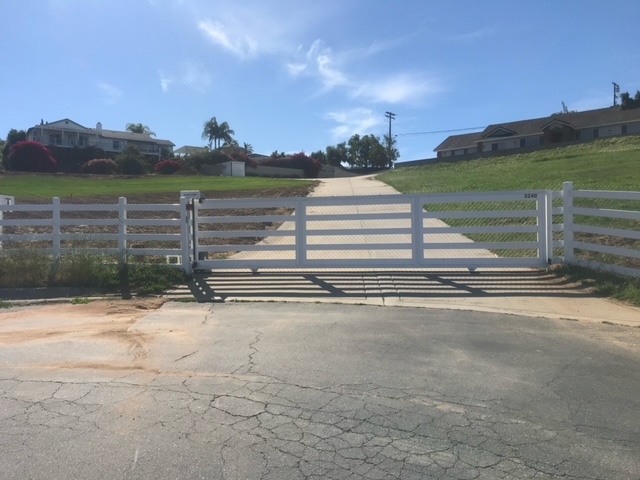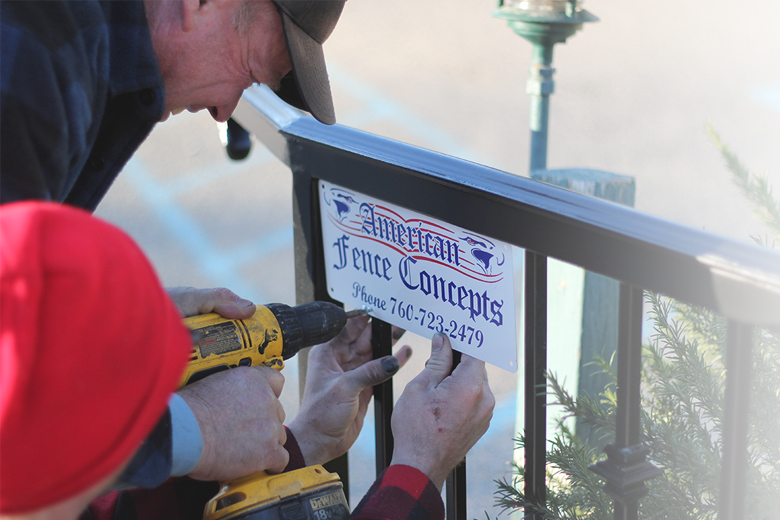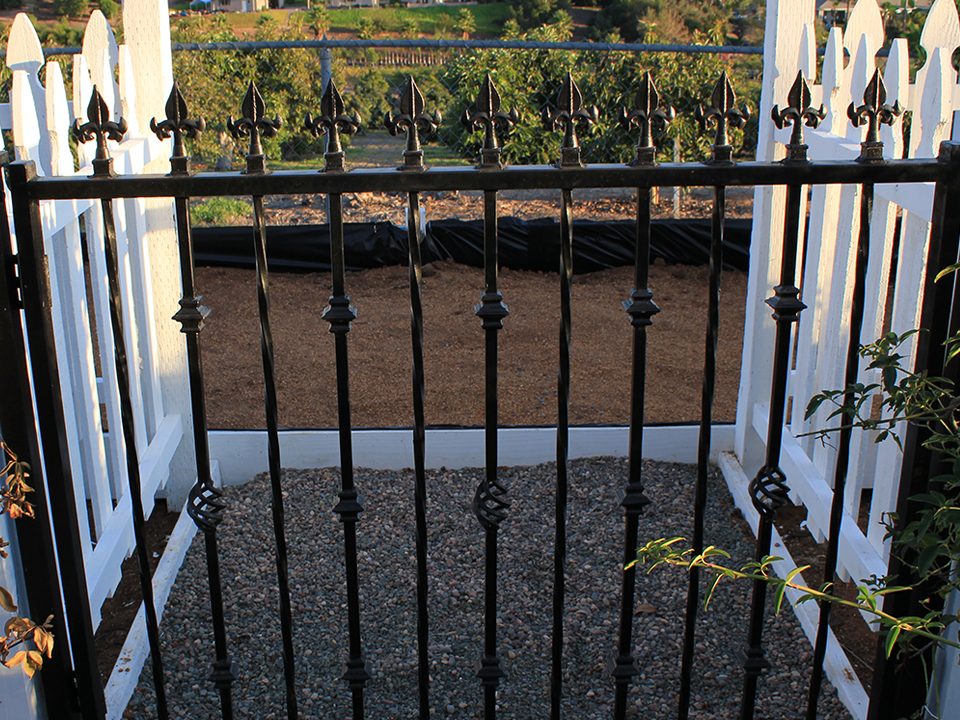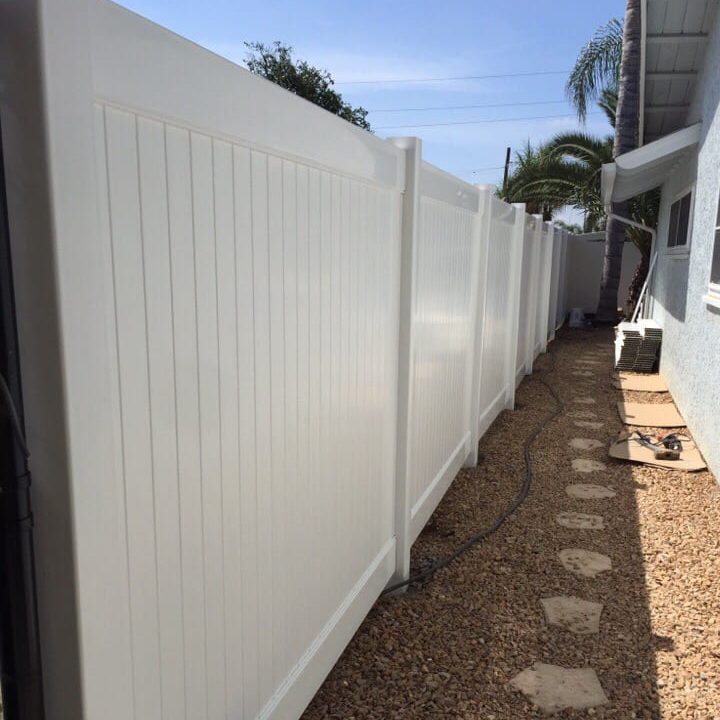- Custom Fence Design & Ornamental Iron
- 1-760-877-9951
- BPostal@AmericanFenceConcepts.com
- 2383 Via Rancheros, Fallbrook, CA 92028
Comparing Materials: Iron, Wood, and Composite Fencing Options

Automatic Driveway Gates: Where Modern Tech Meets Timeless Design
May 17, 2024
Maintaining Your Custom Iron Fencing for Longevity and Beauty
July 7, 2024Choosing the right fencing material is a critical decision when looking to secure and elevate your property. With a myriad of options available, homeowners are often faced with the challenge of balancing durability, aesthetics, maintenance, and cost. In today’s comprehensive guide, we examine three popular fencing materials: iron, wood, and composite. By comparing the pros and cons of each, you can make an informed decision that fits both your lifestyle and design vision.
From traditional elegance to modern practicality, each material brings unique qualities to the table. Whether you prioritize a classic look, natural warmth, or cutting-edge performance, understanding the differences is key. This in-depth exploration will cover everything from the history and craftsmanship of wrought iron to the sustainability of composite materials. Read on to discover which material aligns best with your goals for beauty, security, and longevity.
Section 1: Iron Fencing
Overview and Aesthetic Appeal
Iron fencing, particularly wrought iron, is renowned for its timeless, elegant appearance. For generations, iron has been associated with strength and sophistication. The intricate scrollwork and ornamental detailing possible with iron make it a popular choice for homeowners seeking a classic look that never goes out of style.
Custom iron fences can be highly decorative, designed to enhance the curb appeal of any property. Whether installed as a standalone statement or paired with other materials, iron fencing stands out for its artisanal craftsmanship. Its historical charm combined with modern innovations such as automation and anti-corrosion treatments makes it a versatile option.
Pros of Iron Fencing
-
Durability and Strength: Iron is known for its exceptional strength and long lifespan. High-quality wrought iron can withstand harsh weather and the test of time.
-
Elegant Design: The ornamental capabilities of iron offer endless design possibilities. Homeowners can choose from traditional, ornate patterns or more contemporary, minimalist styles.
-
Customization Options: Because iron is malleable, it allows for extensive customization in terms of shapes, patterns, and finishes. This makes it ideal for bespoke projects tailored to individual aesthetic preferences.
-
Added Security: The robust nature of iron fencing provides a strong physical deterrent against intruders, making it a reliable security solution for both residential and commercial properties.
Cons of Iron Fencing
-
Maintenance Requirements: Although durable, iron requires regular maintenance to prevent rust and corrosion, especially in coastal or humid environments. Periodic painting or treatment may be necessary.
-
Weight and Installation: Iron is heavy, and proper installation requires substantial structural support. This might mean higher installation costs and more extensive groundwork.
-
Higher Initial Investment: Custom iron fencing can be expensive upfront due to its labor-intensive production process and materials, although the long-term durability can justify this investment.
Section 2: Wood Fencing
Overview and Natural Charm
Wood fencing brings a warm, natural aesthetic that blends seamlessly with both urban and rural settings. This traditional material is celebrated for its versatility and ability to create a welcoming, rustic look. Wood fences can be crafted in a variety of styles—from classic picket fences to modern, horizontal slat designs—allowing homeowners to tailor their look based on personal preference and architectural style.
Wood is not only about beauty; it also offers excellent privacy and a sense of enclosure. Many homeowners love the organic texture and color variations that only natural wood can provide. When properly maintained, a wooden fence can be both attractive and effective for marking property boundaries.
Pros of Wood Fencing
-
Aesthetic Versatility: Wood offers a natural warmth and charm that is difficult to replicate with other materials. Its ability to be stained, painted, or left in its natural form offers endless customization possibilities.
-
Privacy and Insulation: Wood fences often provide better visual and sound privacy, creating a secluded space for gardens, patios, or backyard retreats.
-
Ease of Installation: Compared to heavier materials like iron, wood is generally easier and quicker to install. This can result in lower labor costs and shorter project timelines.
-
Cost-Effective: Generally, wood fencing is less expensive upfront than custom iron or composite options, especially if you choose common species and standard designs.
Cons of Wood Fencing
-
Susceptibility to Weathering: Wood is vulnerable to rot, insect damage, and warping if not properly maintained. Environmental conditions play a significant role in its longevity.
-
Regular Maintenance: To keep a wooden fence looking its best, regular treatments such as sealing, staining, or painting are required. Neglect can quickly lead to deterioration and costly repairs.
-
Less Durable Against Intrusion: While wood can provide a fair level of security, it may not offer the same robust barrier as iron. It can be easier to breach without additional reinforcements.
Section 3: Composite Fencing
Overview and Modern Innovation
Composite fencing represents a modern alternative designed to offer the best of both worlds. Made from a blend of recycled wood fibers and plastic polymers, composite materials aim to combine the natural appeal of wood with the durability and low maintenance of synthetic options. These fences are engineered to resist rot, insect damage, and fading, making them an attractive option for homeowners seeking longevity with minimal upkeep.
Composite fences have rapidly gained popularity due to their environmentally friendly composition and versatility in design. The material offers a consistent look that mimics natural wood but with uniform performance characteristics that reduce the unpredictability often found in natural materials.
Pros of Composite Fencing
-
Low Maintenance: Composite fences do not require regular painting, staining, or sealing. They are easy to clean with just soap and water, making them a convenient option for busy homeowners.
-
Durability: The resilience of composite materials against moisture, decay, and insect infestations is a major selling point. This makes them ideal for areas prone to harsh weather or high humidity.
-
Sustainable Choice: Many composite products are made from recycled materials, contributing to eco-friendly building practices and reducing waste.
-
Consistent Appearance: Unlike natural wood, composite fencing offers a uniform appearance with fewer imperfections. This consistency can be a boon for homeowners seeking a modern, streamlined look without the variability of natural grain patterns.
Cons of Composite Fencing
-
Higher Initial Cost: Composite materials tend to have a higher upfront price compared to standard wood fencing. However, the reduced maintenance costs and increased longevity can offset this expense over time.
-
Limited Customization: While composites can mimic the look of natural wood, they are available in a more limited range of colors and textures. Homeowners may find fewer options for customization compared to handcrafted wood or iron fences.
-
Heat Retention: In certain climates, composite materials can absorb and retain heat more than natural materials, which may be a consideration when choosing the ideal material for outdoor use.
Section 4: Making an Informed Decision
Assessing Your Priorities and Lifestyle
When deciding between iron, wood, and composite fencing, start by assessing your priorities. Consider the key factors that are most important for your home: security, aesthetic appeal, maintenance, cost, and environmental impact. Ask yourself questions like:
-
Do I value a traditional, timeless look over contemporary design?
-
How much time and money am I willing to invest in ongoing maintenance?
-
Is security my primary concern, or am I more focused on enhancing the natural beauty of my property?
-
Do I have a preference for eco-friendly, sustainable materials?
By answering these questions, you can narrow down the options that align best with your specific needs. For example, if you crave a classic, secure barrier and are prepared for regular maintenance, iron may be the ideal choice. On the other hand, if low upkeep and sustainability are key, composite fencing might be more appealing. Wood, with its natural warmth and versatile design options, is an excellent middle ground for those who value tradition and are ready to commit to its upkeep.
Budget Considerations and Long-Term Value
Budget plays a crucial role in the decision-making process. While iron fences offer longevity and unparalleled security, they come with higher installation and maintenance costs. Wood fencing may be less expensive upfront, but the need for regular care can add up over time. Composite materials, though initially more costly, typically offer lower maintenance expenses and a longer lifespan.
It’s important to view your investment in a fence as a long-term decision. Consider the total cost of ownership over the expected lifespan of the fence, including maintenance, repairs, and potential upgrades. A higher upfront cost can be justified if the material’s durability and low maintenance requirements mean fewer expenses in the long run.
Style Integration and Customization
Your fence is a major design element that not only provides security but also sets the tone for your entire property. Consider how each material integrates with your home’s architecture and landscape. Iron fencing offers unmatched elegance and can serve as a bold statement piece, while wood conveys a warm, natural aesthetic that blends with garden settings and traditional homes. Composite fencing, with its modern, consistent appearance, works well in contemporary environments where minimal maintenance is a priority.
Customization options also vary between materials. Iron, being highly malleable, allows for detailed ornamental designs and personalized touches. Wood can be customized with various stains and finishes to match your home’s color palette, while composite options may offer a limited range of textures and tones but deliver consistent, modern results.
Environmental Impact
For environmentally conscious homeowners, sustainable building practices are an important consideration. Composite fencing often incorporates recycled materials and can be a greener alternative to traditional wood. Additionally, selecting locally sourced materials, such as reclaimed wood or regional iron products, can help reduce your carbon footprint. Evaluating the environmental impact of your choice not only aligns with green building practices but may also add value to your property by appealing to eco-conscious buyers.
Section 5: Real-Life Applications and Client Experiences
Homeowners who have invested in different fencing materials often share insights that help illuminate the practical aspects of each option. For example, clients who chose custom iron fencing frequently emphasize its robust security features and artistic appeal, noting how it has become a defining feature of their property. In contrast, those who have opted for wood often comment on the natural warmth and charm it brings, despite the need for regular maintenance.
One homeowner remarked, “Our iron fence not only looks amazing but has provided us with the highest level of security. The investment has paid off in both value and peace of mind.” Another client noted, “We chose composite fencing for its low maintenance and sustainability. It has given us a modern look without the hassle of frequent upkeep, which fits perfectly with our busy lifestyle.”
These real-life examples underscore that the right choice depends on individual needs and priorities. There is no one-size-fits-all solution—what works best for one property may differ for another. Personal preferences, local climate, and specific security needs all play a role in determining the ideal material.
Section 6: How to Proceed and Final Considerations
Once you’ve considered the pros and cons of each material, the next step is to consult with experts who can help tailor your choice to your property’s unique requirements. A professional fencing contractor can offer advice on design, installation, and long-term maintenance, ensuring that your investment delivers both immediate satisfaction and enduring value.
Before making a decision, ask for detailed quotes and comparisons that include material costs, labor, and ongoing maintenance expenses. Visiting completed projects and reading client testimonials can also provide valuable insight into the performance and appearance of each material over time.
If you’re still uncertain about which material best aligns with your goals, consider scheduling a personalized consultation. Professional guidance can help navigate the available options, taking into account architectural style, security needs, and budget constraints. By making an informed, thoughtful decision today, you pave the way for a fence that not only secures your property but also enhances its beauty for years to come.
Conclusion
In the realm of fencing, iron, wood, and composite materials each offer distinct advantages and drawbacks. Iron is synonymous with durability and elegance, wood brings natural warmth and versatility, and composite fencing offers modern convenience with sustainable benefits. Your choice should reflect your priorities—whether they lean towards timeless design, low maintenance, or environmental responsibility.
Investing in the right fencing material can transform your property’s entrance, boost its curb appeal, and provide lasting security. By weighing the pros and cons and considering practical, aesthetic, and budgetary factors, you are well-equipped to choose a material that meets your needs and exceeds your expectations.
Ready to take the next step towards a beautiful and secure property?
Call us now at 1-760-877-9951 to schedule a personalized consultation and discover how our custom fencing solutions can transform your home.





